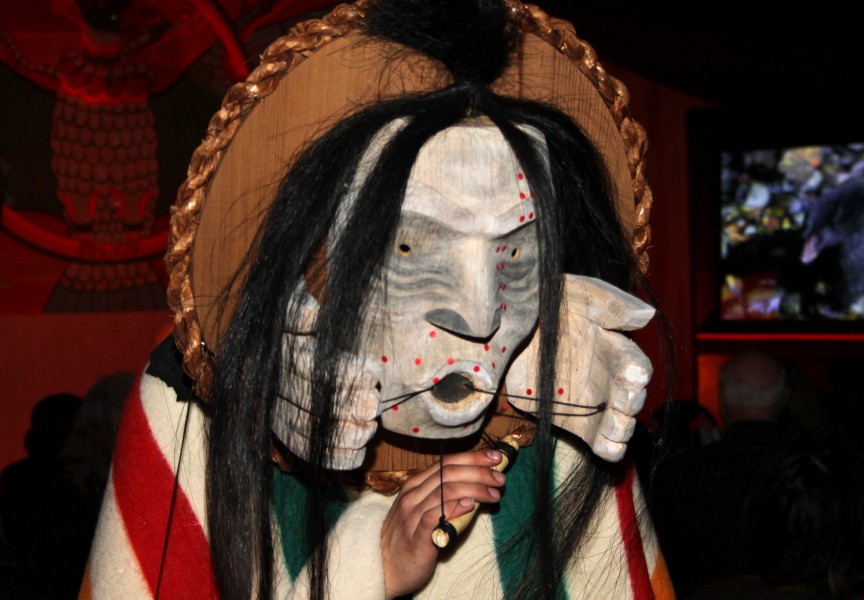Students from école Alberni Elementary School visited in front of the Nuu-chah-nulth Tribal Council Jan. 14 to view the Alberni Indian Residential School Commemoration Pole in honour of late Arthur Thompson. The pole was carved by Gordon Dick.
Reg Sam, NTC’s Pathways/ Student Success Supervisor, shared the history of the AIRS site and talked about the commemoration pole.
The late Art Thompson, a world-renowned artist in his own right, was a student at AIRS and was among the first to bring worldwide attention to the legacy of mistreatment of students who attended the school.
The pole sits in place of a holly tree that was removed from the site because it triggered negative memories of the school.
Sam explained the nature of a residential school. That the students went to school there and lived there, not going home. He kept the discussion quite general, he told Ha-Shilth-Sa, in keeping with the age of the students, describing what the animal carvings represented and the Nuu-chah-nulth legends about transformation, as it is demonstrated on the pole.
The two Grade 4 Alberni Elementary classes were accompanied by Nuu-chah-nulth Education Workers Deb Masso and Jean Thomas and were met onsite by the president of the tribal council, Deb Foxcroft, who welcomed them.
The students have just kicked off a unit on Nuu-chah-nulth-aht and they took a trip to the Tseshaht Nation, which welcomed the group and opened the longhouse, which is in the same building complex as the tribal council building.
They started the visit learning a bit about the mural which adorns the side of Maht Mahs gym, located beside the longhouse.
The theme of the mural, selected by elder Bertha Gus, is “A Place Where First Nations Pull Together.” Artists were Sterling Watts of the Tseshaht First Nation and Walter Collins and Brad Piatka of Port Alberni.
The mural represents one of the Tseshaht villages on a beach in the Broken Group.
Maht Mahs is used as a gathering place where people pull together, including during cultural events like potlatches and Nuu-chah-nulth meetings.
The scene depicts 15 canoes in the water waiting for permission to come ashore. The canoes represent the Makah, Pacheedaht, Ditidaht, Huu-ay-aht, Uchucklesaht, Toquaht, Tla-o-qui-aht, Ahousaht, Kyuquot/Cheklesaht, Ehattesaht/Chinehkint , Nuchatlaht, Mowachaht/Muchalaht, Hupacasath, Hesquiaht and Ucluelet Nations. Tseshaht's canoes are already on the beach.
“We then went to see the totem pole,” said Masso, and Sam came outside to explain the significance of the pole. There was also a brief lesson about the Nuu-chah-nulth Tribal Council offices.
The next stop was the other memorial piece on residential schools within the complex done by Connie Watts.
The sculpture called “Strength From Within” serves as a reminder of the horrors that occurred at AIRS, honors all who didn’t return to their families, and pays tribute to the resiliency of those who survived their time there.
See our story here: http://www.hashilthsa.com/news/2014-10-02/art-installation-ensures-peopl...
Students will be doing additional lessons on the residential school system, Nuu-chah-nulth people, as well as the importance of the cedar tree, including its use in the longhouse, canoes, bentwood boxes, and the uses of cedar bark.






